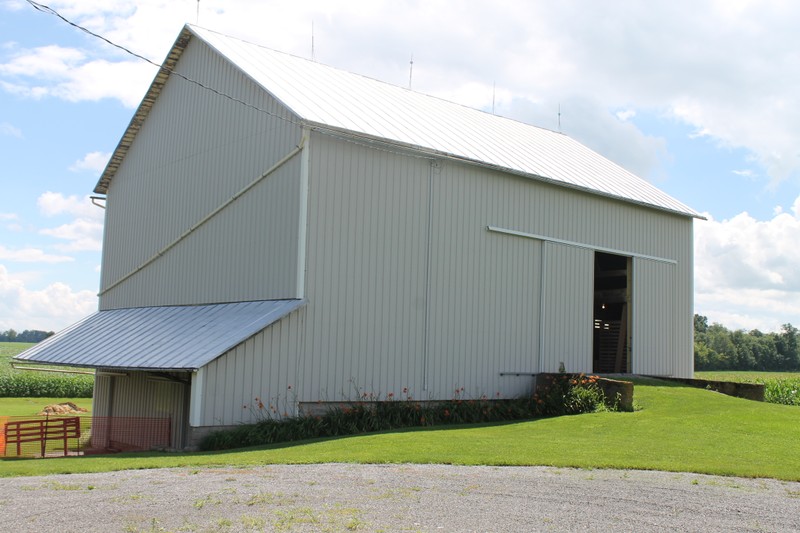Whisler-Laser Barn
Introduction
Text-to-speech Audio
Images
Hancock Historical Museum, Barn Tour Collection, 2015

Backstory and Context
Text-to-speech Audio
The Laser Barn is particularly interesting as it is really two distinct, adjoining barns. This property was settled in 1833 by Michael Whisler. It remained in the Whisler family until 1893, when it was purchased by Samuel Gressley. It promptly changed hands until 1893, when it was purchased by Samuel Gressley. It promptly changed hands again that year to Windfield Dorsey. Dorsey has the property until 1930, when it passed to Riah Ethel Frantz. It remained in the Frantz family until 2013, when the house and barn were purchased by Donald and Cheryl Laser. Much of the surrounding acreage is still owned and farmed y the Frantz family.
The front barn is a raised barn with stalls and cemented floor below. It is a plank barn that likely dates to the 1910's or 1920's. With the loss of large tree forests by the late of 1800's, the days of large dimension timber framing were coming to a close. Farmers looked for a more inexpensive and faster was of barn construction while maintaining strength and diversity in design. Builders were experimenting with truss and laminated plank frame construction. Interestingly, this barn does not make use of any of the standard trussing systems used at the time. It was build for hay storage.
The back barn is a ground barn and was built much earlier. Several adaptations have been made to this early barn, but much of the original structure is intact. As one time, it had a raised floor system that is no longer visible. The original straining tie was taken out to make way for the hay track. The hay track itself is an early rendition and is made of wood. While the barn now presents itself as a transverse barn (entrance on the short wall), evidence suggests that the original entrance was on the long wall. The barn is almost entirely hand-hwen, including much of the smaller bracing. There are a handful of examples of very early sash sawing and the original pole rafters are extant. These details suggest that the barn was constructed in the 1850's and perhaps as early as the 1840's, making it one of the earliest barns ever featured on the Barn Tour.
Sources
Hancock Historical Museum, Barn Tour Collection, 2015
